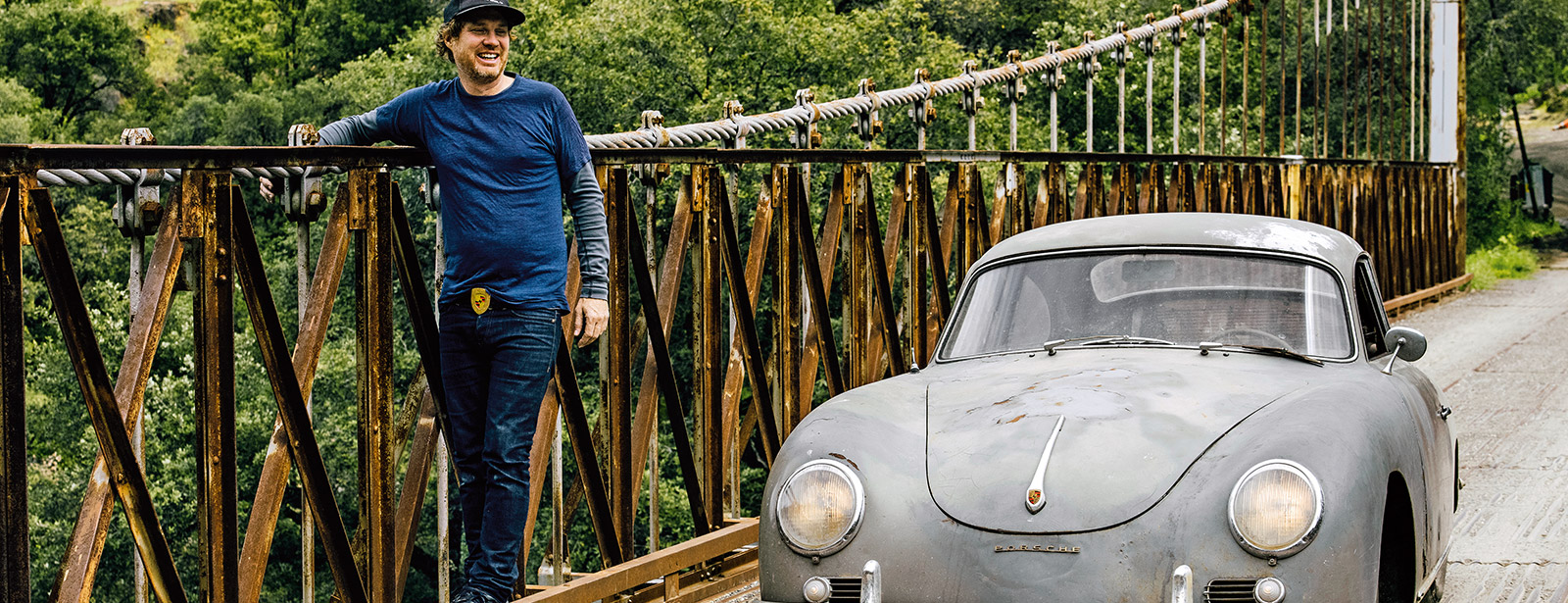
Matt Hummel – DON 176
Not far from Sacramento, capital of California, is where collector Matt Hummel lives his love for cars with patina. He is an excellent example of the drive to preserve authenticity. Hummel’s garage contains some very special treasures: unrestored
Digging. Panning. Washing. These steps do not apply to Matt Hummel’s rather unconventional search for treasure. The 39-year-old collector is not prospecting for nuggets, but rather for rust buckets. Like his latest find—a
Treasure chamber: 80-millimeter pistons from the pre-A production era are among Hummel’s jewels.
The
Hummel wants to drive the faded and weary-looking 356 exactly the way it is. No facelift, no makeup. His reasoning is simple. “The
At the next intersection Hummel sticks his arm out the window to indicate that he wants to turn. After all, who needs turn signals? The 356 barrels down a dirt road. Despite its wild appearance, the car masters curve upon curve with ease, effortlessly climbing the crests of the hills. Hummel reaches his property in the foothills of the Sierra Nevada, and the drive comes to an end.
![[+]](https://files.porsche.com/filestore/image/multimedia/none/christophorus-issue378-article08-content-01/normal/8426d1a7-7672-11e6-9a3c-0019999cd470/porsche-normal.jpg)
Beyond asphalt: This gravel road is Hummel’s favorite drive. It runs from outside Auburn to his home in the foothills. His 1956
Collector’s items: Hummel would prefer to keep a number of his gems for himself.
On grounds surrounded by trees and undergrowth, the 356 pulls to a stop next to the other members of Hummel’s automotive family: a
Matt Hummel’s passion for older automobiles began very early. At the age of sixteen, during a semester break in his art studies, he started looking for rare car parts. His first objects of desire were Volkswagen components. He worked his way through half of California in search of them. Later he and some friends heard about a high density of Volkswagen parts in Burma and Thailand, which prompted them to set off on exciting expeditions. “At that time I wasn’t happy until I lay exhausted in my hotel room with a heap of something like safari-style hinged windows from VW Samba buses next to my bed.” Back in the United States, he sold the rare components. “If you start dealing with historical VW parts,” he remarks, “at some point you’ll automatically end up with
![[+]](https://files.porsche.com/filestore/image/multimedia/none/christophorus-issue378-article08-content-02/normal/8a809f73-7672-11e6-9a3c-0019999cd470/porsche-normal.jpg)
Everyday use: Appearance is not important. What Matt Hummel values in his classic
Prized parts: Hummel’s barn also keeps rare 356 headlight sockets.
Hummel’s treasure chamber is the barn next to his home. It contains finds from the past ten years. Hummel opens a yellowed cardboard box, pulls out shiny green plastic parts, and cradles them in his hand like jewels. “The Holy Grail!” he exclaims. “My ex-girlfriend and I spent our last vacation in search of them.” With a smile he displays a complete set of knobs from an early
“When someone with a rare
Text by Bastian Fuhrmann
Photos by Jay Watson
![[+]](https://files.porsche.com/filestore/image/multimedia/none/christophorus-issue378-article08-content-03/normal/8a809f74-7672-11e6-9a3c-0019999cd470/porsche-normal.jpg)
Hummel’s garage: The 356 Cabriolet from 1952 and the 911
![[+]](https://files.porsche.com/filestore/image/multimedia/none/christophorus-issue378-article08-margin-01/normal/cbbad5a4-75bb-11e6-9a3c-0019999cd470/porsche-normal.jpg)
![[+]](https://files.porsche.com/filestore/image/multimedia/none/christophorus-issue378-article08-margin-02/normal/cbbad5a5-75bb-11e6-9a3c-0019999cd470/porsche-normal.jpg)
![[+]](https://files.porsche.com/filestore/image/multimedia/none/christophorus-issue378-article08-margin-03/normal/d3fa3cbb-75bb-11e6-9a3c-0019999cd470/porsche-normal.jpg)
![[+]](https://files.porsche.com/filestore/image/multimedia/none/christophorus-issue378-article08-margin-04/normal/d3fa3cbd-75bb-11e6-9a3c-0019999cd470/porsche-normal.jpg)